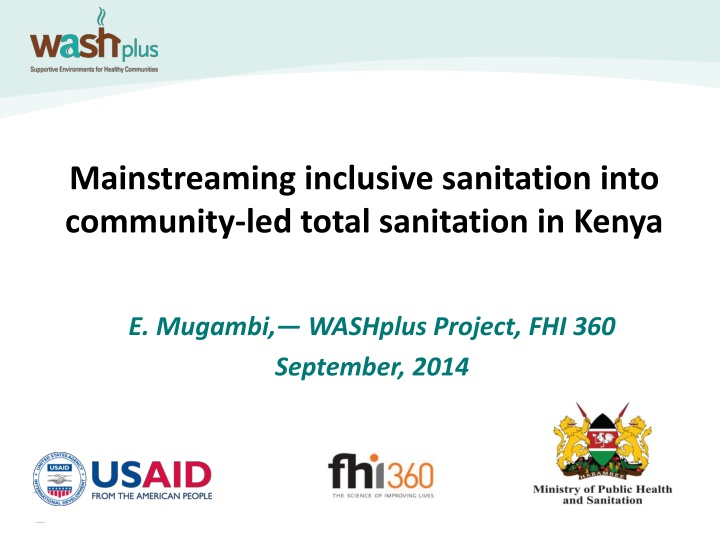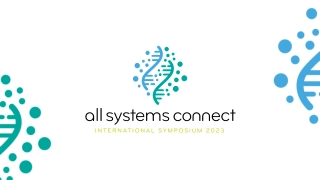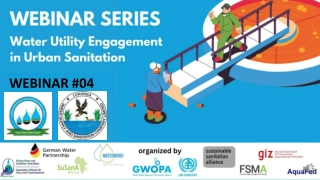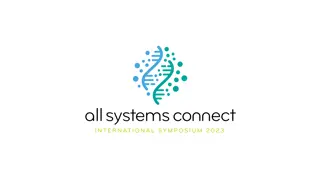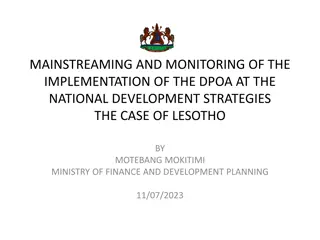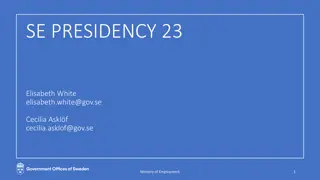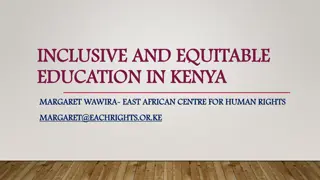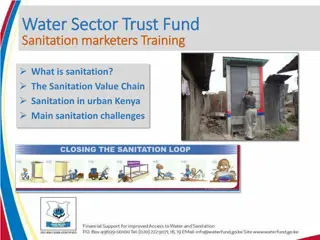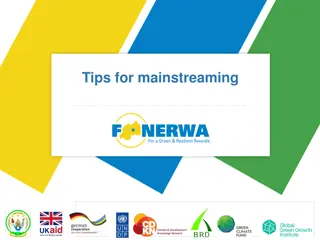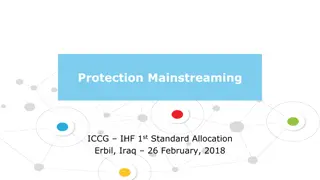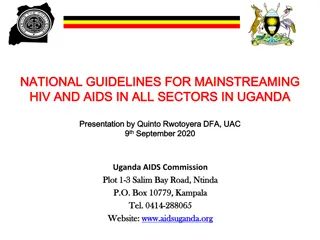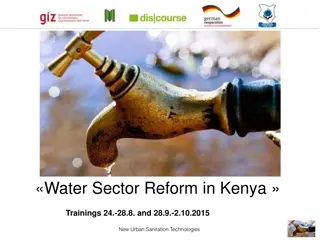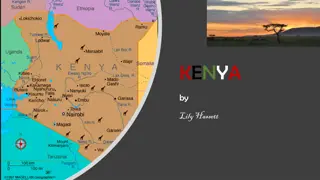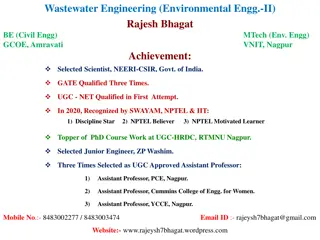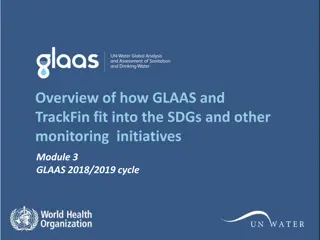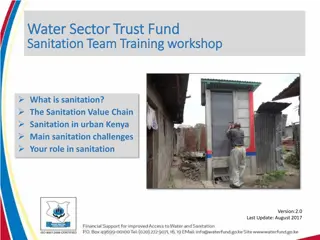Mainstreaming inclusive sanitation into community-led total sanitation in Kenya
Approximately 19,500 Kenyans, including 17,100 children under 5, die from diarrhea annually, with poor WASH practices being a major contributing factor. The Community-Led Total Sanitation (CLTS) approach in Kenya aims to accelerate the uptake of basic sanitation in rural areas but needs to be more inclusive, especially for people with disabilities. The Disability Situation in Kenya highlights the importance of making sanitation facilities accessible to all to achieve truly Open Defecation Free (ODF) communities. Recognizing sanitation as a constitutional right in Kenya, inclusive sanitation practices are crucial to ensuring everyone's access to adequate sanitation facilities.
Download Presentation

Please find below an Image/Link to download the presentation.
The content on the website is provided AS IS for your information and personal use only. It may not be sold, licensed, or shared on other websites without obtaining consent from the author.If you encounter any issues during the download, it is possible that the publisher has removed the file from their server.
You are allowed to download the files provided on this website for personal or commercial use, subject to the condition that they are used lawfully. All files are the property of their respective owners.
The content on the website is provided AS IS for your information and personal use only. It may not be sold, licensed, or shared on other websites without obtaining consent from the author.
E N D
Presentation Transcript
Mainstreaming inclusive sanitation into community-led total sanitation in Kenya E. Mugambi, WASHplus Project, FHI 360 September, 2014
Background Approx. 19,500 Kenyans, including 17,100 children under 5, die from diarrhoea yearly Nearly 90% is directly attributed to poor WASH practices (GoK, 2012). About 14% practice open defecation 17% live in rural areas (JMP 2013)
CLTS Approach in Kenya MOH Kenya adopted CLTS in 2008 Aims to accelerate uptake of basic sanitation in rural Kenya But there was a gap If CLTS aims at total sanitation, then it has to be inclusive(Wilbur, J. and Jones, H. 2014)
Why Make CLTS Fully Inclusive? The 2.5 billion in the world who lack access to adequate sanitation (WHO/UNICEF 2014) include many people with disabilities Disabled people who cannot access sanitation facilities will either continue with open defecation or will need support Challenges include access to and use of sanitation facilities with standard designs
Disability Situation in Kenya Disability rate in Kenya is estimated at 4.6% (GoK,2008) Physical impairment - 1.6% Visual impairment - 1.4% Despite increased sanitation uptake, people with impaired mobility will continue to be marginalized Unless sanitation facilities are accessible to all, communities will never be truly ODF
Inclusive Sanitation Rights Issue Sanitation is now a constitutional right in Kenya Article 43 (b) Right to accessible and adequate housing, and to reasonable standards of sanitation Article 54 (e) Right to access materials and devices to overcome constraints arising from the person s disability. We must recognize that people are different and require specific support to overcome impediments blocking their ability to access and use sanitation facilities
WASHplus Kenya Program CLTSplus CLTSplus is implemented through MOH plus component emphasizes hand washing with soap and inclusive sanitation Focuses on sanitation needs for people with impaired mobility (elderly, physically and visually disabled, and children ) Encourages designing improvised supportive sanitation devices through Small Doable Action approach
Context - Approach Build capacity of CLTS implementers on inclusive sanitation barriers analysis and finding solutions Implementers include: Public health officers, community health volunteers & natural leaders Followed CLTS stages, using all triggering tools MOH s CLTS M&E tools used to collect data Modified M&E tools to capture data of households with people with disabilities
Results Over 530 CLTS implementers trained on inclusive sanitation CHWs & natural leaders negotiate and demonstrate how to make supportive devices for individuals with disabilities WASH knowledge shared with nearly 3,000 community health workers
Lessons Learned Integration in CLTS Orientation on inclusive sanitation has enlightened CLTS implementers; now being integrated in the national CLTS approach Indigenous innovation with local materials can change lives of families and individuals Due to stigma, people affected often do not attend triggering sessions, therefore case-by-case identification of households with persons with disability is important
CLTS Plus Conclusion CLTSplus pilot program on the ground had immediate impact Communities are very innovative in designing solutions when prompted Policy change required for longer term equity gains and sustainability
Thank you Facilitate the identification of those who are weaker, poorer, landless or otherwise unable to construct their own toilets. These may be old people, widows, single mothers, the disabled, those who are chronically sick (Kar with Chambers 2008). www.washplus.org
